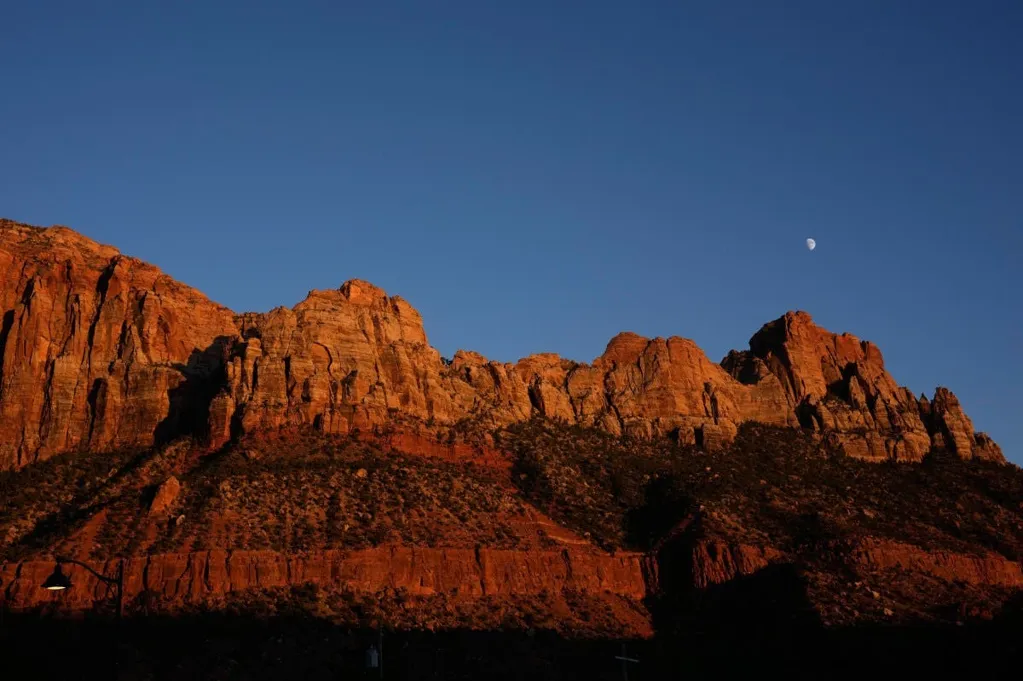The National Parks Conservation Association (NPCA) has warned that leaving parks open during the federal government shutdown is "not just irresponsible, it's dangerous."
"You're really taking your chances going in with a limited staff that are going to be there," Kristen Brengel, the NPCA's senior vice-president of government affairs, told the BBC.
However, a spokesperson for the Department of the Interior (DOI) told Newsweek: "It's unfortunate that this group is asking the American public to stay away from our most treasured lands as our park service employees are working without pay, thanks to Congressional Democrats, to ensure a great experience."
During the last government shutdown in 2019, President Donald Trump ordered parks to remain open to the public, but there were reports of trash piling up, restrooms becoming unsanitary, and parks being vandalized.
To avoid the same issues, former national park superintendents have pushed for park closures, and the NPCA has warned of the negative impacts likely to unfold if parks are left open.
Since the start of the government shutdown on Wednesday, one death has been reported in a national park: Alaskan climber Balin Miller died in a climbing accident in Yosemite National Park.
An NPCA spokesperson told Newsweek that as long as the government is shut down, "our national parks should be as well."
"We've been here before during the last government shutdown, and we've witnessed the damage that can occur when our national parks are left open with only a skeleton crew on hand to protect them and visitors," it said.
The warning comes after the DOI issued a contingency plan stating that the parks would remain open with reduced staffing levels during the shutdown.
The plan said that more than half of National Park Service (NPS) staff -- 9,296 of the 14,500 employees -- would be furloughed. Around 2,500 staff members are not affected as their salaries are not financed by the annual appropriations, and around 2,700 will continue to work as their roles are necessary to "protect life and property."
The staff reductions come on top of previous cuts. Earlier this year, a 20 percent reduction in staff, along with severe budget cuts, led to the NPS reporting a staffing crisis at a time of record visitor levels.
A recent New York Times report also found that at least 90 parks were facing serious strain while trying to comply with orders to remain open to the public, despite the huge workforce reductions.
The NPCA also said that every day the government is shutdown, national parks will lose as much as $1 million in fee revenue, while gateway communities could lose up to $80 million in visitor spending.
Theresa Pierno, NPCA's President and CEO, said in a statement on Wednesday: "The government has shut down, and the administration is once again putting our national parks and visitors at risk, effectively directing staff to open park gates and walk away... It's not just irresponsible, it's dangerous."
The NPCA spokesperson told Newsweek: "Across the country, parks are cutting ranger programs, closing visitor centers, and falling behind on critical maintenance and research because there just aren't enough people left to do the job. For months, we've been hearing reports of another round of mass staff terminations, potentially even during the shutdown. Regardless of the size, any further staffing cuts to the Park Service would be devastating for our parks. Every single employee is critical to keeping parks safe and accessible, and losing them would directly impact the experiences of millions of visitors and put the protection of our natural and cultural resources at risk."
The DOI spokesperson told Newsweek that the department "remains committed to keeping critical services open and running for the benefit of the American people despite efforts by Congressional Democrats to close our parks, stop U.S. energy production, and prevent our first responders like our law enforcement from keeping our streets safe and our wildland firefighters from fighting wildfires."
The federal government shut down on Tuesday night after the Senate adjourned without a funding resolution for the new fiscal year, which started on October 1. The shutdown will continue until both political parties agree on a proposal.
